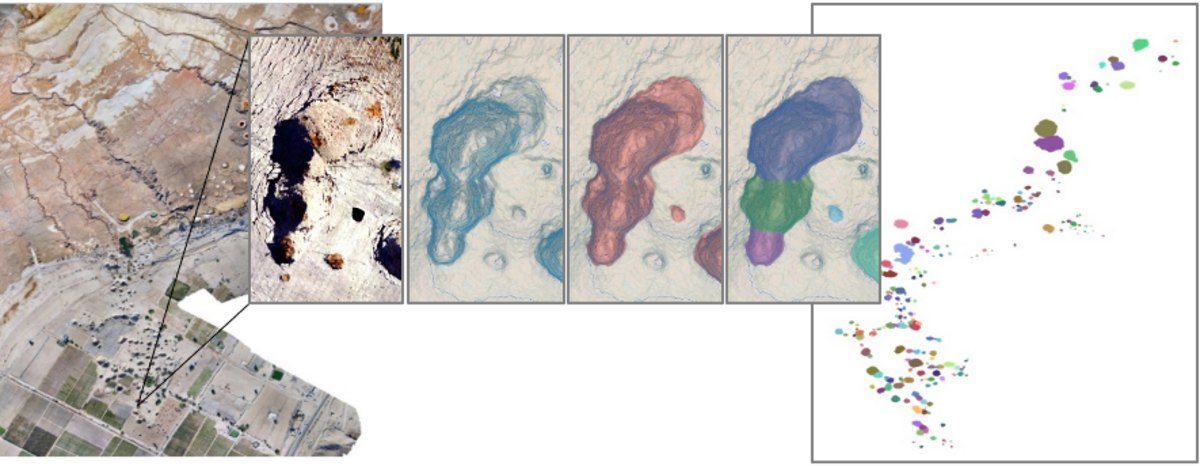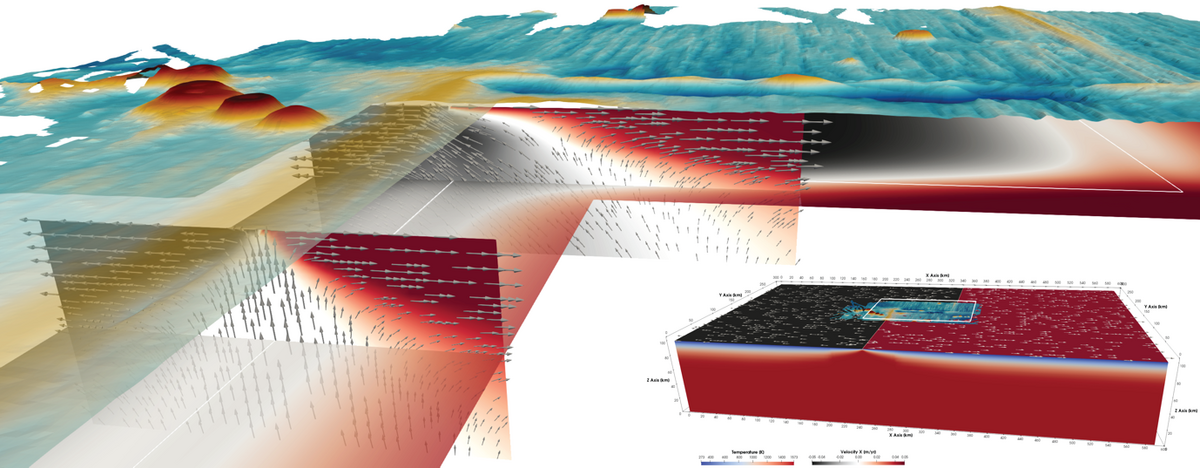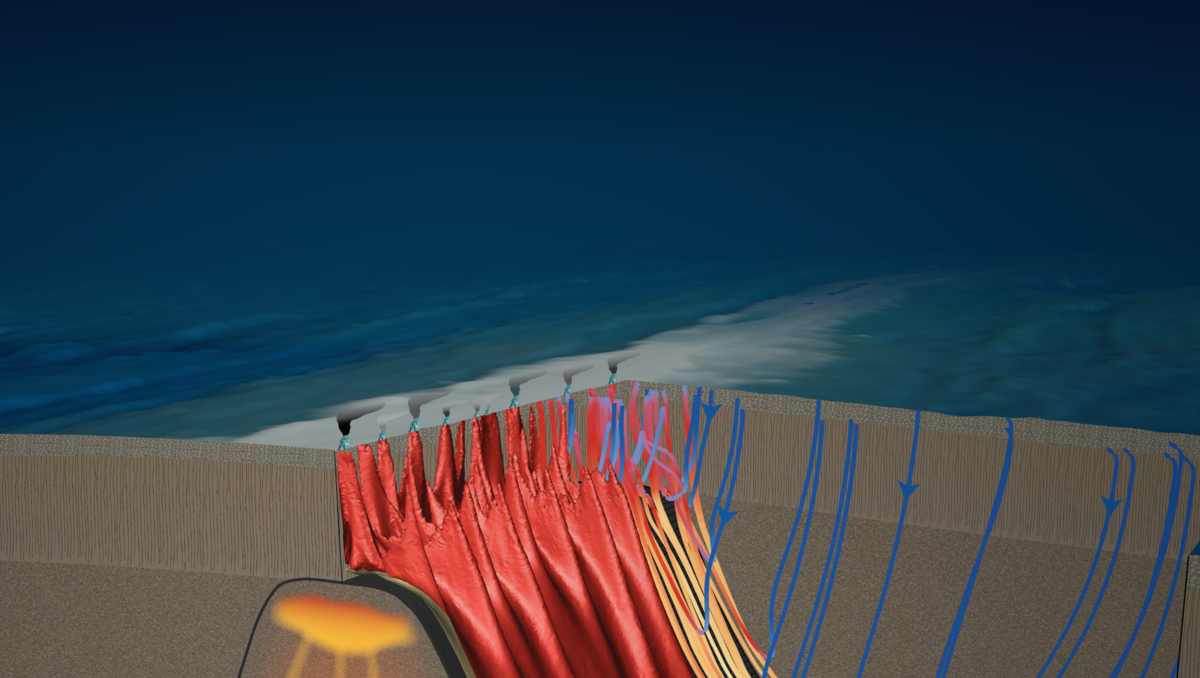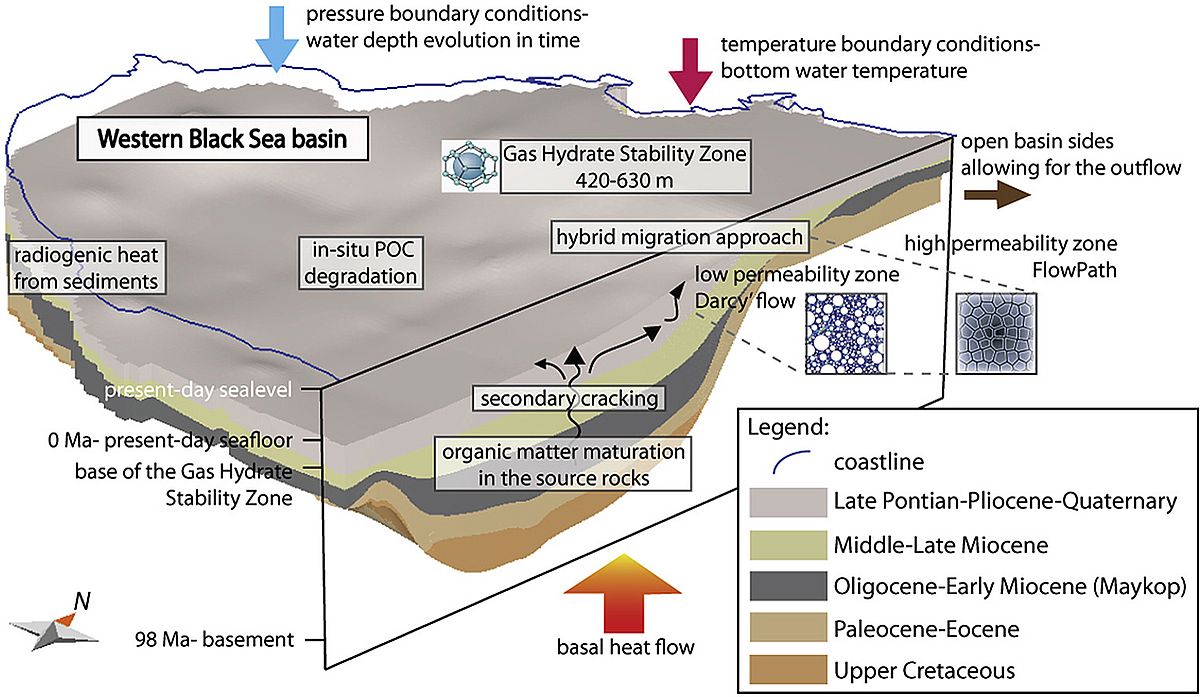Working Group 'Seafloor Modeling'
In the "Seafloor Modeling" group, we use computer simulations to investigate the formation and evolution of the ocean floor, its role in the earth system, and the responsible use of energetic and mineral resources on the seabed. We follow an interdisciplinary approach that links modern modeling techniques with different observations and data sets. We follow an open source approach and live the concept of "open science". We are also increasingly integrating machine learning and AI into our research.
Our focus is:
Formation and evolution of the ocean floor
We combine models with data to study the geodynamic evolution of the ocean floor. For this purpose, we link findings from computer simulations with different geological, geochemical and geophysical data sets. Examples of our work are studies on the interactions between hydrothermalism and crust formation at mid-ocean ridges, the tectonic and petrological evolution of transform faults, and the formation of passive continental margins. Image shows predicted mantle flow beneath the Clipperton transform fault using the mantle convection code ASPECT.
Hydrothermalism and biogeochemical exchange across the seafloor
We investigate magmatic hydrothermal systems and their role in the earth system. For this we use various in-house computer models, which are based on the complex equation of state of sea water and can also resolve multi-phase phenomena. From these model results, we gain knowledge about mass and energy fluxes, which allow us to make quantitative estimates of the formation of seafloor ore deposits and the role of hydrothermal discharge fluxes in global biogeochemical cycles. We are also increasingly relying on fluid dynamic simulations on the pore scale to better understand fluid-rock interactions at high and low temperature. Image shows a 3-D simulation of hydrothermal flow beneath the East Pacific Rise at 9°N (Hasenclever et al., 2014).
Machine Learning and AI

We investigate the application of up-to-date computer algorithms and artificial intelligence on geoscientific questions on the dynamics of the ocean floor and coasts. We use deep learning methods (e.g. UNet) trained on the basis of satellite/aerial photos, geophysical and submarine data for the automated recognition of geological structures in different environments (shallow waters, coastal and deep sea).
Current examples are the automatic structure recognition on the former floor of the Dead Sea and the identification of ocean floor material based on geophysical and bathymetric data. The figure shows the automatic detection of sinkholes at the Dead Sea.
Gas and fluid migration in marine sediments
The migration of fluids and gases in marine sediments is another important building block for a better understanding of the connections between the solid earth and the global ocean in the earth system. Our work focuses on the synthesis of models and data to estimate the global and regional distribution of gas hydrate and associated biogeochemical turnover rates. Another focus is the deep biosphere and so-called cold seeps on the sea floor. We are also increasingly using machine learning and AI approaches to estimate global seabed accumulation and turnover rates. Image shows results of a basin modeling study on gas hydrates in the Western Black Sea basin (Burwicz and Haeckel, 2020).





